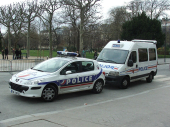
The first major retrospective of gay British art opens this week at the Tate Britain gallery in London, featuring a portrait of Oscar Wilde next to his prison cell door.
"Queer British Art 1861-1967" marks the 50th anniversary of the decriminalisation of male homosexuality in England and looks at the century leading up to the point when the death penalty for gay sex was lifted.
Billed as the "first ever exhibition dedicated to queer British art", the retrospective contains an 1881 portrait of Wilde which is being displayed publicly in Britain for the first time.
"It shows him just on the cusp of success as a writer," said curator Clare Barlow.
It stands next to the cream-coloured wooden door of his cell at Reading Gaol, where he was imprisoned after being sentenced to two years' hard labour for homosexual offences in 1895.
"There's a real emotional punch in this pairing," Barlow said.
"When you see an object like this, it really brings it home that it actually happened, this was somebody whose life was actually wrecked."
- Desires coded in ambiguity -
The visual arts exhibition is spread over eight rooms, and explores such topics as coded desires, defying conventions and the contradictions between public and private lives.
It shows how 19th-century artists were able to explore the ambiguities in artwork to express what could not otherwise be said -- such as paintings of naked men swimming -- and how post-World War II artists could break new ground.
"Between those legal landmarks, there are huge shifts in society, identity, how people see themselves and in arts and culture," Barlow said.
"With a lot of these works, the queerness or otherwise is viewable to certain audiences but not to others. You get a real mix of different responses.
"Look below the surface and there's an extraordinary wealth of stories just waiting to tumble out.
"It's a story about people liberating themselves, liberating each other, finding ways to be themselves."
The exhibition features works by Francis Bacon, David Hockney, Gluck and Cecil Beaton.
It includes the playwright Noel Coward's red silk dressing gown and images of drag artists such as Danny La Rue.
"Each of these artworks is incomplete without an understanding of the sexual lives from which these artworks emerge," said Tate Britain director Alex Farquharson.
"This exhibition is all the more important in acting as an excavation of a semi-hidden past. It's a history that absolutely speaks to our present."
The exhibition opens on Wednesday and runs until October 1. afp, photo - wikimedia



































